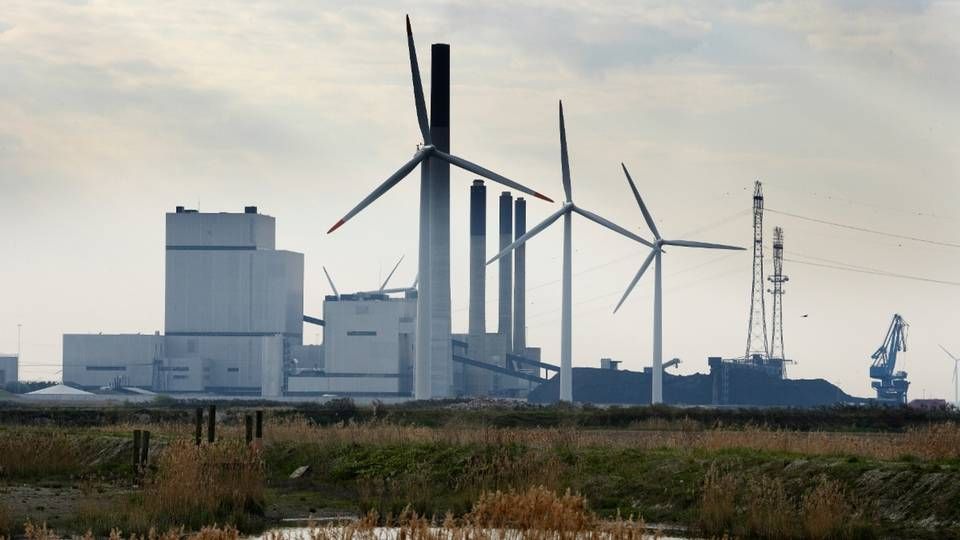Vattenfall stays hungry for Danish wind after major impairment

With a stroke of a pen, 23 of Vattenfall's wind farms in Denmark and Sweden lost SEK 1.5 billion (EUR 150 million) in value today.
This information arrived in connection with the release of the group's second quarter interim report, showing a range of red accounting figures. However, the wind impairments were dramatically overshadowed by a write-down worth SEK 9.1 billion on Moorburg, the utility's coal-fired power plant in Hamburg, Germany.
This latter bit was the overarching factor behind earnings before interest and taxes landing in a deficit of SEK 7 billion and profit at SEK -8.5 billion.
This news also become somewhat diluted with the concurrent report of Chief Executive Magnus Hall's resignation, effective from six months time at the latest.
However, whereas the board of directors must now find a replacement CEO, and Vattenfall's coal portfolio is now solidly assigned to history, wind energy as a category is still pointing forward. With just over 3 GW in wind capacity, the power source accounts for an growing proportion of the company's generation, but with 23 of 43 wind farms located in Denmark and Sweden, these downgraded assets form a sizeable portion of the wind portfolio.
The impairments must, though, not be seen as Vattenfall writing off Denmark and Sweden as its main wind power markets.
"We will certainly remain interested in Sweden and Denmark, where we will monitor the market and make decisions from case to case," Vattenfall Chief Financial Officer Anna Borg tells EnergyWatch.
Norwegian utility Statkraft has also previously, booked sizeable impairments on its domestic and Swedish wind portfolio and furthermore announced that it's no longer be interested in building more wind capacity in Norway.
Cheap old turbines
One look at Vattenfall's wind portfolio reveals which type of wind farms suddenly shed SEK 1.5 billion in value.
Despite more than half of the Swedish power company's wind assets being located in Denmark and Sweden, the facilities account for only slightly more than one third of Vattenfall's global wind capacity.
With 14 wind farms in operation, Denmark is the country that hosts the largest number of Vattenfall-owned wind installations – but these are both small and vintage. Altogether, Vattenfall holds 804.6 MW in the country, most of which takes the form of Horns Rev 3, rated at 407 MW, the 158 MW Horns Rev 1, and onshore wind farm Klima Fjordeholme at 67.2 MW.
Each of remaining 11 facilities has an effect of less than 30 MW and are some the utility's smallest wind farms. In Sweden, Vattenfall has 345 MW distributed among nine installations, of which Lillgrund at 110 MW is the largest. A commonality in the Nordic wind portfolio is that many of the farms are older than 10 years, and, according to the CFO, these are the assets impacted by the write-downs.
"As a consequence of the Nordic region's collapsed power price and enormously low values on certificates [Sweden's subsidy scheme, -ed.], we see ourself obliged to write down the value. It important to emphasize that these are older wind farms with higher LCOE than the newer wind facilities we have built as well as those we're building at the moment," Borg says.
LCOE, or levelized cost of energy, means price per generated MWh over the lifecycle of, in the this case, wind turbines.
"These impairments pertain relatively old wind farms with technology not as advanced as at present. Since then the price of wind energy has become markedly lower," Borg says.
The Danish portfolio is particularly antiquated. A trip to the historical achieve bears witness to this, with, for instance, the oldest being Nordjylland Vindpark with a combined effect of 6 MW and with 18 year in operation. Ryå is 15 years old and has a total capacity of 7.5 MW. The turbine models at these sites were also produced by yesteryear's OEMs such as Bonus and NEG Micon.
Whereas the Swedish farms are newer than their Danish counterparts, they are, on the other hand, also hit hard by the imploded values of the country's certificates, which have now finally fallen to pieces ahead of their discontinuation at the end of 2021.
No quick revision
Vattenfall reiterates several times over that the write-downs relate to older onshore wind installations. Borg also underscores, though, that the impairments are not to be confused with a rapid reaction to the dramatic fall in second-quarter power prices.
This has been a long time coming, and the asset values will not be quickly restored in the event of a quick price surge, she says.
"We always have some elbow room, and the write-downs are, naturally, not a precise sum but rather an evaluation spanning over a period. So, price fluctuations in a single year will not mean that we will automatically revise the impairment. The write-down is not a result of a fast price dip but rather is the consequence of falling prices over a longer period. That is the issue of greater importance," she says and thereby states that observers shouldn't expect the utility to retract the impairment any time soon:
"There will be no short-term revision of this impairment. But if the price rises again over a longer period, then it could, of course, become an option. However, that doesn't appear to be the case right now," Borg says.
English Edit: Daniel Frank Chrisetensen























.jpg&w=384&q=75)
